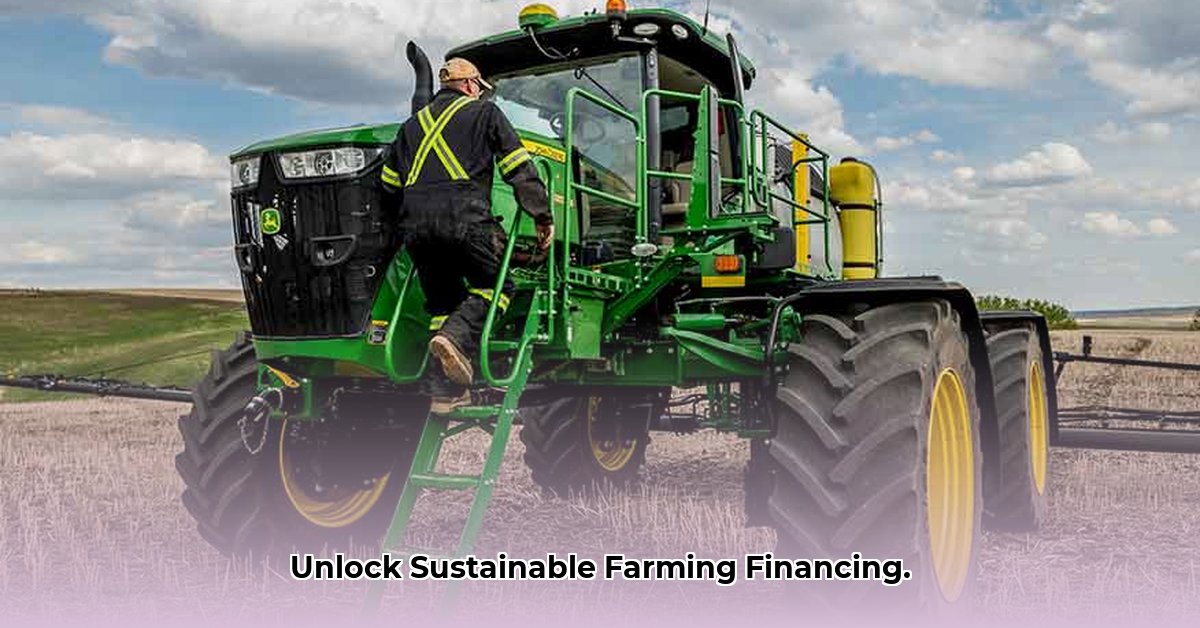
Imagine this: the sun rises on your farm, painting the dew-kissed fields in gold. But your trusty old tractor sputters and coughs, threatening to leave you behind in the race for yield and sustainability. Securing a loan for a used tractor might be the missing piece in your puzzle—the key to upgrading to efficient, environmentally conscious equipment. This guide demystifies the process, offering practical advice and real-world strategies to help you secure the financing you need. For more options, check out these [tractor leasing options](https://lease-a-tractor.pages.dev).
The Challenges of Sustainable Farming Financing
Sustainable agriculture is crucial for both environmental health and long-term farm profitability. However, adopting sustainable practices often requires upfront investments in specialized equipment. High interest rates, extended repayment periods, and a limited pool of specialized loans specifically designed for sustainable agriculture create significant hurdles. A recent loan example highlights this: a farmer sought a $63,782.28 loan for a used tractor; securing favorable terms proved challenging due to high interest rates and stringent credit requirements. This situation is strikingly common. “Many farmers face significant challenges in accessing capital for sustainable farming practices,” explains Dr. Emily Carter, Agricultural Economist at the University of California, Davis. "The absence of tailored financing options forces farmers to compromise their sustainability goals due to financial constraints."
Exploring Your Financing Options
Fortunately, numerous financing avenues exist for acquiring a used tractor suited for sustainable practices. Let’s examine your options:
Conventional Farm Equipment Loans: Banks and credit unions offer these widely, but interest rates can be high, especially for used equipment. Thorough comparison shopping is essential.
Government Grants and Subsidized Loans: Various governmental agencies (like the USDA in the US) often offer programs supporting sustainable agriculture. These may include subsidized interest rates, grants, or direct financial assistance. Check your local and regional programs. These can significantly reduce your loan costs.
Private Lenders Specializing in Sustainable Agriculture: Lenders specifically focused on sustainable agriculture often offer more flexible terms and understand the unique challenges and long-term benefits of environmentally-friendly farming.
Leasing: Leasing reduces upfront costs, offering flexibility. However, leasing can be more expensive in the long run than purchasing. Carefully evaluate the long-term costs involved.
Crowdfunding or Alternative Financing: Explore crowdfunding platforms or specialized financing companies catering to farms. These offer unique access to capital but may require thorough preparation and presentation of your farming goals.
Negotiating Favorable Loan Terms
Securing approval and favorable terms hinges on presenting yourself as a financially sound and environmentally conscientious investment:
Develop a Strong Business Plan: A detailed business plan showcasing your sustainable practices and projected profitability is crucial. This demonstrates your long-term vision and financial viability to potential lenders.
Enhance Your Credit Score: A good credit score improves your chances of approval and results in lower interest rates. Pay bills promptly, manage credit utilization, and monitor your credit report diligently.
Highlight Your Commitment to Sustainability: Emphasize your sustainable farming methods. This demonstrates to lenders a commitment to long-term profitability and reduced risk, appealing to their investment goals.
Long-Term Planning: Sustainability's Financial Benefits
Investing in sustainable practices creates long-term financial benefits. Regenerative techniques often result in improved yields, reduced input costs (fertilizers, pesticides), and healthier soil. While the initial investment in a used tractor might seem high, the long-term return on investment through sustainable practices is often superior. "Investing in sustainable equipment is a long-term investment in both the environment and the farm’s financial success," notes John Miller, a farmer from Iowa, who recently acquired a used no-till planter through a government-supported loan program. "The returns in soil health alone have justified the investment many times over."
Your Actionable Steps to Secure Financing
Research Loan Options: Thoroughly investigate all available loan sources.
Develop a Detailed Budget: Include the tractor's cost, loan payments, and all related operating expenses.
Compare Loan Terms: Carefully analyze offers from different lenders to find the optimum financing solution for your farm’s needs.
Craft a Compelling Business Plan: Showcase your farming strategy and commitment to sustainable practices.
Improve Your Creditworthiness: Address any credit challenges to maximize your chances of loan approval.
Seek Sustainable Agriculture Lenders: Explore resources focused on financing sustainable farming initiatives.
Securing financing for a used tractor is a pivotal step towards building a prosperous and environmentally responsible farm. By strategically planning, conducting thorough research, and confidently presenting yourself, you can achieve your goals and contribute to a sustainable future for agriculture.